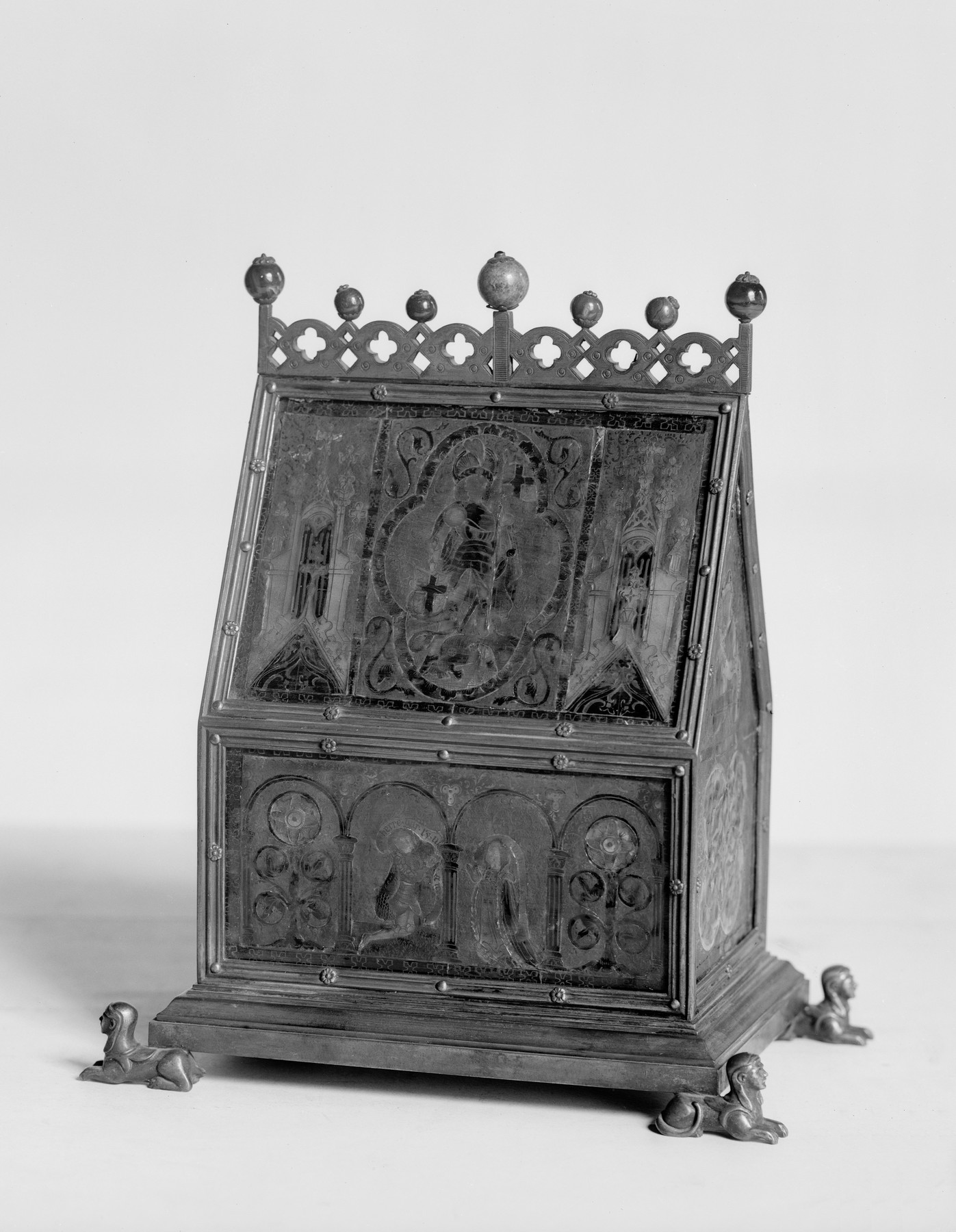Reliquary Shrine
(18th and 19th Centuries )
In form, this object approximates an early 13th-century French reliquary shrine. The original shrines were made of gilded bronze and champlevé enamel. This 19th-century adaptation, however, is executed in plique-à-jour, or openwork, enamel with scenes of St. George and donors in the English late Gothic style. The sphinx-shaped feet are exotic, non-medieval additions.
This shrine was originally shown in the "Gothic Room" that was installed in The Walters Art Museum in 1909. The room, created by the New York firm of L. Marcotte and Company, contained modern works that were intended to evoke the Gothic era rather than to deceive the visitor.
Provenance
Provenance (from the French provenir, 'to come from/forth') is the chronology of the ownership, custody, or location of a historical object. Learn more about provenance at the Walters.
Henry Walters, Baltimore, ca. 1909 (?); by bequest to Walters Art Museum, 1931.
Exhibitions
| 2009 | The Saint John's Bible: A Modern Vision through Medieval Methods. The Walters Art Museum, Baltimore. |
Geographies
France (Place of Origin)
Measurements
H: 11 13/16 x W: 7 5/16 in. (30 x 18.5 cm)
Credit Line
Acquired by Henry Walters, ca. 1909
Location in Museum
Not on view
Accession Number
In libraries, galleries, museums, and archives, an accession number is a unique identifier assigned to each object in the collection.
In libraries, galleries, museums, and archives, an accession number is a unique identifier assigned to each object in the collection.
44.222


